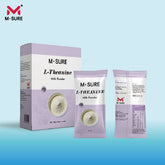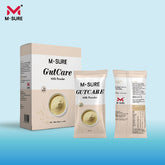Comparative Analysis on Nutritional Requirements for Aerobic vs. Anaerobic Exercise
by
BiotechAusway
03 Aug 2025
Exercise-Specific Nutrition Strategy
I. Core Differences in Energy Sources
| Nutrient | Aerobic Exercise | Anaerobic Exercise |
|---|---|---|
| Carbohydrates | 50–65% of total calories (critical for muscle glycogen in endurance activities) |
40–50% of total calories (rapid replenishment post-HIIT) |
| Protein | 1.0–1.6g/kg body weight (maintains muscular endurance) |
1.6–2.2g/kg body weight (repairs muscle fiber microtrauma) |
Metabolic Mechanism
-
Aerobic: Uses aerobic metabolism (fat/carb breakdown → CO₂ + H₂O)
-
Anaerobic: Uses phosphagen/glycolytic systems (energy release → lactate)
II. Pre-/Post-Workout Nutrition Strategies
1. Aerobic Exercise (e.g., running, swimming)
-
Pre-workout (2 hrs before): Low-GI carbs (e.g., oats, whole wheat) → stabilizes blood glucose
-
During exercise: 30–60g fast-acting carbs/hour (e.g., sports drinks) → prevents glycogen depletion
-
Post-workout:
-
Carbs: 1–1.2g/kg body weight → rapid glycogen restoration
-
Protein: 0.3g/kg body weight → prevents muscle catabolism
-
2. Anaerobic Exercise (e.g., weightlifting, sprinting)
-
Pre-workout: 5–10g BCAA → reduces muscle damage
-
Post-workout (within 30 min):
-
Protein: 20–40g whey protein → activates mTOR synthesis pathway
-
Carbs:Protein = 2:1 ratio (e.g., 40g protein + 80g banana)
-
III. Specialized Nutrient Requirements
| Nutrient | Aerobic Focus | Anaerobic Focus |
|---|---|---|
| Iron | Prevents sports anemia (15–20mg/day) | Supports oxygen transport (red meat, blood-based foods) |
| Electrolytes | Sodium: 500–700mg/hour (replaces sweat losses) | Magnesium/potassium: prevents cramps |
| Antioxidants | Vitamins C & E: neutralize free radicals | Zinc & selenium: reduce inflammation from strength training |
Debunking Myths
-
“Avoid anaerobic exercise during fat loss?” → False!
Anaerobic training raises basal metabolic rate → burns fat for up to 24 hours -
“Aerobic workouts don’t need protein?” → False!
Endurance exercise causes muscle breakdown → protein is essential for recovery
IV. Adapting Solutions
Fat Loss Phase
-
Post-workout carbs: 0.5g/kg body weight
-
Increase protein-to-carb ratio to 2:1
Muscle Gain Phase
-
Add pre-sleep casein (slow-release protein) to prevent overnight catabolism
Elderly Adults
-
Combine aerobic training with 5g BCAA supplementation → helps counteract sarcopenia
Key Implementation Notes
-
HIIT Recovery: Use a 3:1 carb-to-protein ratio
-
Post-exercise: Avoid high-fat foods for ≤2 hours (slows nutrient absorption)
-
For Diabetics: Choose low-GI carbs + whey isolate (e.g., oats + whey)






